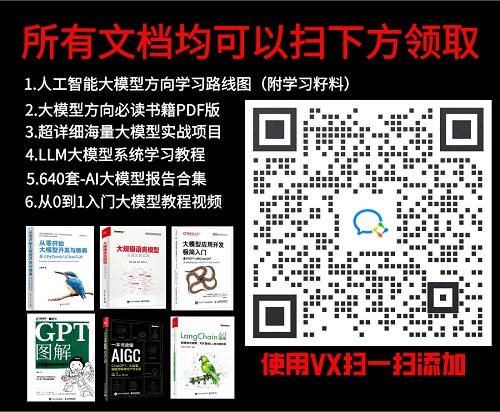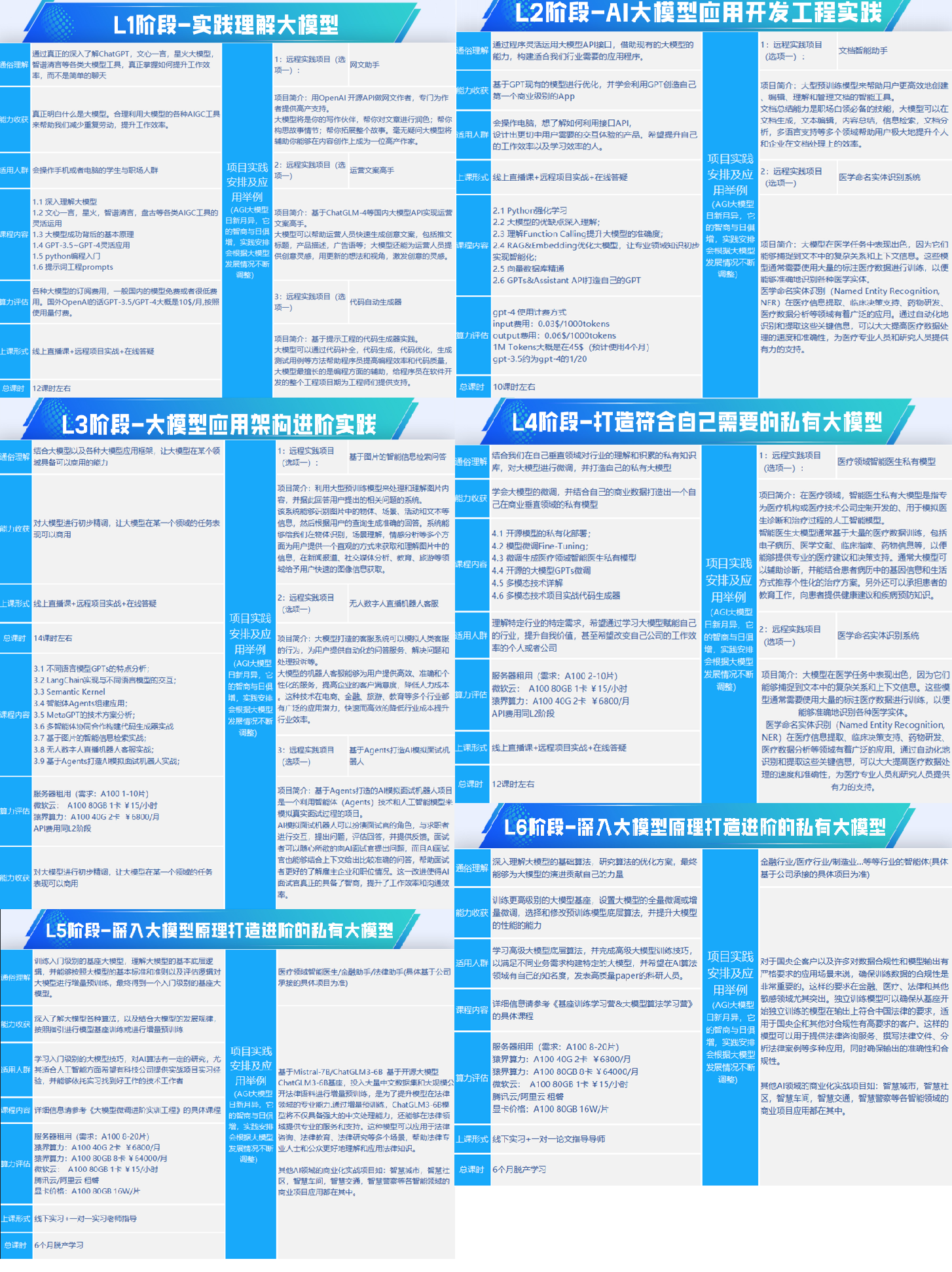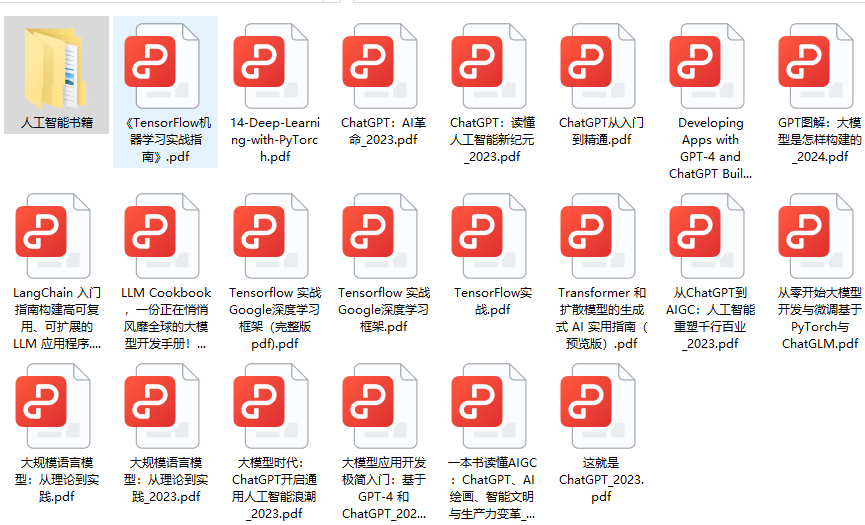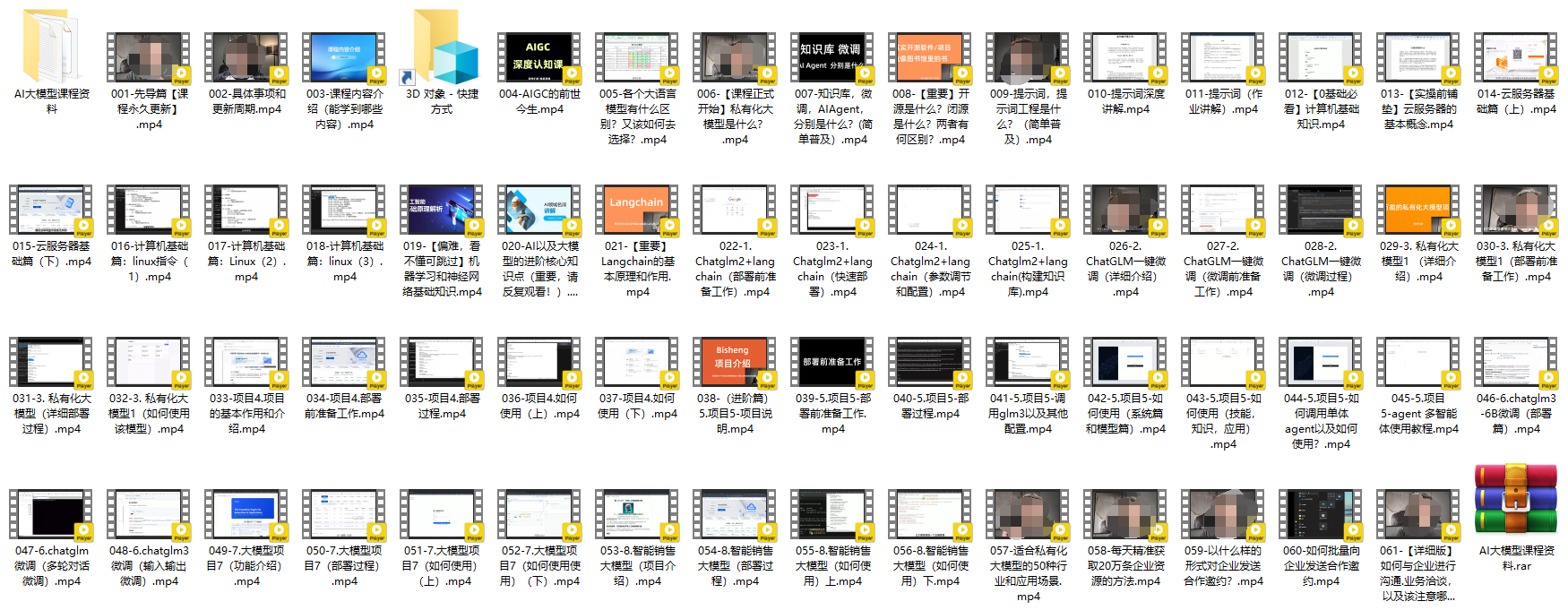简介: 在本文中我们将探讨使用开源大型语言多模态模型(Large Language Multi-Modal)构建检索增强生成(RAG)系统。本文的重点是在不依赖LangChain或LLlama index的情况下实现这一目标,这样可以避免更多的框架依赖。
什么是RAG
在人工智能领域,检索增强生成(retrieve - augmented Generation, RAG)作为一种变革性技术改进了大型语言模型(Large Language Models)的能力。从本质上讲,RAG通过允许模型从外部源动态检索实时信息来增强AI响应的特异性。
该体系结构将生成能力与动态检索过程无缝结合,使人工智能能够适应不同领域中不断变化的信息。与微调和再训练不同,RAG提供了一种经济高效的解决方案,允许人工智能在不改变整个模型的情况下能够得到最新和相关的信息。
RAG的作用
1、提高准确性和可靠性:
通过将大型语言模型(llm)重定向到权威的知识来源来解决它们的不可预测性。降低了提供虚假或过时信息的风险,确保更准确和可靠的反应。
2、增加透明度和信任:
像LLM这样的生成式人工智能模型往往缺乏透明度,这使得人们很难相信它们的输出。RAG通过允许组织对生成的文本输出有更大的控制,解决了对偏差、可靠性和遵从性的关注。
3、减轻幻觉:
LLM容易产生幻觉反应——连贯但不准确或捏造的信息。RAG通过确保响应以权威来源为基础,减少关键部门误导性建议的风险。
4、具有成本效益的适应性:
RAG提供了一种经济有效的方法来提高AI输出,而不需要广泛的再训练/微调。可以通过根据需要动态获取特定细节来保持最新和相关的信息,确保人工智能对不断变化的信息的适应性。
多模式模态模型
多模态涉及有多个输入,并将其结合成单个输出,以CLIP为例:CLIP的训练数据是文本-图像对,通过对比学习,模型能够学习到文本-图像对的匹配关系。
该模型为表示相同事物的不同输入生成相同(非常相似)的嵌入向量。

多模
态大型语言(multi-modal large language)
GPT4v和Gemini vision就是探索集成了各种数据类型(包括图像、文本、语言、音频等)的多模态语言模型(MLLM)。虽然像GPT-3、BERT和RoBERTa这样的大型语言模型(llm)在基于文本的任务中表现出色,但它们在理解和处理其他数据类型方面面临挑战。为了解决这一限制,多模态模型结合了不同的模态,从而能够更全面地理解不同的数据。
多模态大语言模型它超越了传统的基于文本的方法。以GPT-4为例,这些模型可以无缝地处理各种数据类型,包括图像和文本,从而更全面地理解信息。
与RAG相结合
这里我们将使用Clip嵌入图像和文本,将这些嵌入存储在ChromDB矢量数据库中。然后将利用大模型根据检索到的信息参与用户聊天会话。

我们将使用来自Kaggle的图片和维基百科的信息来创建一个花卉专家聊天机器人
首先我们安装软件包:
! pip install -q timm einops wikipedia chromadb open_clip_torch
!pip install -q transformers==4.36.0
!pip install -q bitsandbytes==0.41.3 accelerate==0.25.0
预处理数据的步骤很简单只是把图像和文本放在一个文件夹里

可以随意使用任何矢量数据库,这里我们使用ChromaDB。
import chromadb
from chromadb.utils.embedding_functions import OpenCLIPEmbeddingFunction
from chromadb.utils.data_loaders import ImageLoader
from chromadb.config import Settings
client = chromadb.PersistentClient(path="DB")
embedding_function = OpenCLIPEmbeddingFunction()
image_loader = ImageLoader() # must be if you reads from URIs
ChromaDB需要自定义嵌入函数
from chromadb import Documents, EmbeddingFunction, Embeddings
class MyEmbeddingFunction(EmbeddingFunction):
def __call__(self, input: Documents) -> Embeddings:
# embed the documents somehow or images
return embeddings
这里将创建2个集合,一个用于文本,另一个用于图像
collection_images = client.create_collection(
name='multimodal_collection_images',
embedding_function=embedding_function,
data_loader=image_loader)
collection_text = client.create_collection(
name='multimodal_collection_text',
embedding_function=embedding_function,
)
# Get the Images
IMAGE_FOLDER = '/kaggle/working/all_data'
image_uris = sorted([os.path.join(IMAGE_FOLDER, image_name) for image_name in os.listdir(IMAGE_FOLDER) if not image_name.endswith('.txt')])
ids = [str(i) for i in range(len(image_uris))]
collection_images.add(ids=ids, uris=image_uris) #now we have the images collection
对于Clip,我们可以像这样使用文本检索图像
from matplotlib import pyplot as plt
retrieved = collection_images.query(query_texts=["tulip"], include=['data'], n_results=3)
for img in retrieved['data'][0]:
plt.imshow(img)
plt.axis("off")
plt.show()

也可以使用图像检索相关的图像

文本集合如下所示
# now the text DB
from chromadb.utils import embedding_functions
default_ef = embedding_functions.DefaultEmbeddingFunction()
text_pth = sorted([os.path.join(IMAGE_FOLDER, image_name) for image_name in os.listdir(IMAGE_FOLDER) if image_name.endswith('.txt')])
list_of_text = []
for text in text_pth:
with open(text, 'r') as f:
text = f.read()
list_of_text.append(text)
ids_txt_list = ['id'+str(i) for i in range(len(list_of_text))]
ids_txt_list
collection_text.add(
documents = list_of_text,
ids =ids_txt_list
)
然后使用上面的文本集合获取嵌入
results = collection_text.query(
query_texts=["What is the bellflower?"],
n_results=1
)
results
结果如下:
{'ids': [['id0']],
'distances': [[0.6072186183744086]],
'metadatas': [[None]],
'embeddings': None,
'documents': [['Campanula () is the type genus of the Campanulaceae family of flowering plants. Campanula are commonly known as bellflowers and take both their common and scientific names from the bell-shaped flowers—campanula is Latin for "little bell".\nThe genus includes over 500 species and several subspecies, distributed across the temperate and subtropical regions of the Northern Hemisphere, with centers of diversity in the Mediterranean region, Balkans, Caucasus and mountains of western Asia. The range also extends into mountains in tropical regions of Asia and Africa.\nThe species include annual, biennial and perennial plants, and vary in habit from dwarf arctic and alpine species under 5 cm high, to large temperate grassland and woodland species growing to 2 metres (6 ft 7 in) tall.']],
'uris': None,
'data': None}
或使用图片获取文本
query_image = '/kaggle/input/flowers/flowers/rose/00f6e89a2f949f8165d5222955a5a37d.jpg'
raw_image = Image.open(query_image)
doc = collection_text.query(
query_embeddings=embedding_function(query_image),
n_results=1,
)['documents'][0][0]

上图的结果如下:
A rose is either a woody perennial flowering plant of the genus Rosa (), in the family Rosaceae (), or the flower it bears. There are over three hundred species and tens of thousands of cultivars. They form a group of plants that can be erect shrubs, climbing, or trailing, with stems that are often armed with sharp prickles. Their flowers vary in size and shape and are usually large and showy, in colours ranging from white through yellows and reds. Most species are native to Asia, with smaller numbers native to Europe, North America, and northwestern Africa. Species, cultivars and hybrids are all widely grown for their beauty and often are fragrant. Roses have acquired cultural significance in many societies. Rose plants range in size from compact, miniature roses, to climbers that can reach seven meters in height. Different species hybridize easily, and this has been used in the development of the wide range of garden roses.
这样我们就完成了文本和图像的匹配工作,其实这里都是CLIP的工作,下面我们开始加入LLM。
from huggingface_hub import hf_hub_download
hf_hub_download(repo_id="visheratin/LLaVA-3b", filename="configuration_llava.py", local_dir="./", force_download=True)
hf_hub_download(repo_id="visheratin/LLaVA-3b", filename="configuration_phi.py", local_dir="./", force_download=True)
hf_hub_download(repo_id="visheratin/LLaVA-3b", filename="modeling_llava.py", local_dir="./", force_download=True)
hf_hub_download(repo_id="visheratin/LLaVA-3b", filename="modeling_phi.py", local_dir="./", force_download=True)
hf_hub_download(repo_id="visheratin/LLaVA-3b", filename="processing_llava.py", local_dir="./", force_download=True)
我们是用visheratin/LLaVA-3b
from modeling_llava import LlavaForConditionalGeneration
import torch
model = LlavaForConditionalGeneration.from_pretrained("visheratin/LLaVA-3b")
model = model.to("cuda")
加载tokenizer
from transformers import AutoTokenizer
tokenizer = AutoTokenizer.from_pretrained("visheratin/LLaVA-3b")
然后定义处理器,方便我们以后调用
from processing_llava import LlavaProcessor, OpenCLIPImageProcessor
image_processor = OpenCLIPImageProcessor(model.config.preprocess_config)
processor = LlavaProcessor(image_processor, tokenizer)
下面就可以直接使用了
question = 'Answer with organized answers: What type of rose is in the picture? Mention some of its characteristics and how to take care of it ?'
query_image = '/kaggle/input/flowers/flowers/rose/00f6e89a2f949f8165d5222955a5a37d.jpg'
raw_image = Image.open(query_image)
doc = collection_text.query(
query_embeddings=embedding_function(query_image),
n_results=1,
)['documents'][0][0]
plt.imshow(raw_image)
plt.show()
imgs = collection_images.query(query_uris=query_image, include=['data'], n_results=3)
for img in imgs['data'][0][1:]:
plt.imshow(img)
plt.axis("off")
plt.show()
得到的结果如下:

结果还包含了我们需要的大部分信息

这样我们整合就完成了,最后就是创建聊天模板,
prompt = """<|im_start|>system
A chat between a curious human and an artificial intelligence assistant.
The assistant is an exprt in flowers , and gives helpful, detailed, and polite answers to the human's questions.
The assistant does not hallucinate and pays very close attention to the details.<|im_end|>
<|im_start|>user
<image>
{question} Use the following article as an answer source. Do not write outside its scope unless you find your answer better {article} if you thin your answer is better add it after document.<|im_end|>
<|im_start|>assistant
""".format(question='question', article=doc)
如何创建聊天过程我们这里就不详细介绍了,完整代码在这里:
https://avoid.overfit.cn/post/c2d8059cc5c145a48acb5ecb8890dc0e
如何系统的去学习AI大模型LLM ?
作为一名热心肠的互联网老兵,我意识到有很多经验和知识值得分享给大家,也可以通过我们的能力和经验解答大家在人工智能学习中的很多困惑,所以在工作繁忙的情况下还是坚持各种整理和分享。
但苦于知识传播途径有限,很多互联网行业朋友无法获得正确的资料得到学习提升,故此将并将重要的 AI大模型资料 包括AI大模型入门学习思维导图、精品AI大模型学习书籍手册、视频教程、实战学习等录播视频免费分享出来。
所有资料 ⚡️ ,朋友们如果有需要全套 《LLM大模型入门+进阶学习资源包》,扫码获取~

一、全套AGI大模型学习路线
AI大模型时代的学习之旅:从基础到前沿,掌握人工智能的核心技能!

二、640套AI大模型报告合集
这套包含640份报告的合集,涵盖了AI大模型的理论研究、技术实现、行业应用等多个方面。无论您是科研人员、工程师,还是对AI大模型感兴趣的爱好者,这套报告合集都将为您提供宝贵的信息和启示。

三、AI大模型经典PDF籍
随着人工智能技术的飞速发展,AI大模型已经成为了当今科技领域的一大热点。这些大型预训练模型,如GPT-3、BERT、XLNet等,以其强大的语言理解和生成能力,正在改变我们对人工智能的认识。 那以下这些PDF籍就是非常不错的学习资源。


四、AI大模型商业化落地方案

阶段1:AI大模型时代的基础理解
- 目标:了解AI大模型的基本概念、发展历程和核心原理。
- 内容:
- L1.1 人工智能简述与大模型起源
- L1.2 大模型与通用人工智能
- L1.3 GPT模型的发展历程
- L1.4 模型工程
- L1.4.1 知识大模型
- L1.4.2 生产大模型
- L1.4.3 模型工程方法论
- L1.4.4 模型工程实践 - L1.5 GPT应用案例
阶段2:AI大模型API应用开发工程
- 目标:掌握AI大模型API的使用和开发,以及相关的编程技能。
- 内容:
- L2.1 API接口
- L2.1.1 OpenAI API接口
- L2.1.2 Python接口接入
- L2.1.3 BOT工具类框架
- L2.1.4 代码示例 - L2.2 Prompt框架
- L2.2.1 什么是Prompt
- L2.2.2 Prompt框架应用现状
- L2.2.3 基于GPTAS的Prompt框架
- L2.2.4 Prompt框架与Thought
- L2.2.5 Prompt框架与提示词 - L2.3 流水线工程
- L2.3.1 流水线工程的概念
- L2.3.2 流水线工程的优点
- L2.3.3 流水线工程的应用 - L2.4 总结与展望
- L2.1 API接口
阶段3:AI大模型应用架构实践
- 目标:深入理解AI大模型的应用架构,并能够进行私有化部署。
- 内容:
- L3.1 Agent模型框架
- L3.1.1 Agent模型框架的设计理念
- L3.1.2 Agent模型框架的核心组件
- L3.1.3 Agent模型框架的实现细节 - L3.2 MetaGPT
- L3.2.1 MetaGPT的基本概念
- L3.2.2 MetaGPT的工作原理
- L3.2.3 MetaGPT的应用场景 - L3.3 ChatGLM
- L3.3.1 ChatGLM的特点
- L3.3.2 ChatGLM的开发环境
- L3.3.3 ChatGLM的使用示例 - L3.4 LLAMA
- L3.4.1 LLAMA的特点
- L3.4.2 LLAMA的开发环境
- L3.4.3 LLAMA的使用示例 - L3.5 其他大模型介绍
- L3.1 Agent模型框架
阶段4:AI大模型私有化部署
- 目标:掌握多种AI大模型的私有化部署,包括多模态和特定领域模型。
- 内容:
- L4.1 模型私有化部署概述
- L4.2 模型私有化部署的关键技术
- L4.3 模型私有化部署的实施步骤
- L4.4 模型私有化部署的应用场景
学习计划:
- 阶段1:1-2个月,建立AI大模型的基础知识体系。
- 阶段2:2-3个月,专注于API应用开发能力的提升。
- 阶段3:3-4个月,深入实践AI大模型的应用架构和私有化部署。
- 阶段4:4-5个月,专注于高级模型的应用和部署。
这份完整版的所有 ⚡️ 大模型 LLM 学习资料已经上传CSDN,朋友们如果需要可以微信扫描下方CSDN官方认证二维码免费领取【保证100%免费】
全套 《LLM大模型入门+进阶学习资源包》↓↓↓ 获取~

但苦于知识传播途径有限,很多互联网行业朋友无法获得正确的资料得到学习提升,故此将并将重要的 AI大模型资料 包括AI大模型入门学习思维导图、精品AI大模型学习书籍手册、视频教程、实战学习等录播视频免费分享出来。
😝有需要的小伙伴,可以V扫描下方二维码免费领取🆓

一、全套AGI大模型学习路线
AI大模型时代的学习之旅:从基础到前沿,掌握人工智能的核心技能!

二、640套AI大模型报告合集
这套包含640份报告的合集,涵盖了AI大模型的理论研究、技术实现、行业应用等多个方面。无论您是科研人员、工程师,还是对AI大模型感兴趣的爱好者,这套报告合集都将为您提供宝贵的信息和启示。

三、AI大模型经典PDF籍
随着人工智能技术的飞速发展,AI大模型已经成为了当今科技领域的一大热点。这些大型预训练模型,如GPT-3、BERT、XLNet等,以其强大的语言理解和生成能力,正在改变我们对人工智能的认识。 那以下这些PDF籍就是非常不错的学习资源。


四、AI大模型商业化落地方案

阶段1:AI大模型时代的基础理解
- 目标:了解AI大模型的基本概念、发展历程和核心原理。
- 内容:
- L1.1 人工智能简述与大模型起源
- L1.2 大模型与通用人工智能
- L1.3 GPT模型的发展历程
- L1.4 模型工程
- L1.4.1 知识大模型
- L1.4.2 生产大模型
- L1.4.3 模型工程方法论
- L1.4.4 模型工程实践 - L1.5 GPT应用案例
阶段2:AI大模型API应用开发工程
- 目标:掌握AI大模型API的使用和开发,以及相关的编程技能。
- 内容:
- L2.1 API接口
- L2.1.1 OpenAI API接口
- L2.1.2 Python接口接入
- L2.1.3 BOT工具类框架
- L2.1.4 代码示例 - L2.2 Prompt框架
- L2.2.1 什么是Prompt
- L2.2.2 Prompt框架应用现状
- L2.2.3 基于GPTAS的Prompt框架
- L2.2.4 Prompt框架与Thought
- L2.2.5 Prompt框架与提示词 - L2.3 流水线工程
- L2.3.1 流水线工程的概念
- L2.3.2 流水线工程的优点
- L2.3.3 流水线工程的应用 - L2.4 总结与展望
- L2.1 API接口
阶段3:AI大模型应用架构实践
- 目标:深入理解AI大模型的应用架构,并能够进行私有化部署。
- 内容:
- L3.1 Agent模型框架
- L3.1.1 Agent模型框架的设计理念
- L3.1.2 Agent模型框架的核心组件
- L3.1.3 Agent模型框架的实现细节 - L3.2 MetaGPT
- L3.2.1 MetaGPT的基本概念
- L3.2.2 MetaGPT的工作原理
- L3.2.3 MetaGPT的应用场景 - L3.3 ChatGLM
- L3.3.1 ChatGLM的特点
- L3.3.2 ChatGLM的开发环境
- L3.3.3 ChatGLM的使用示例 - L3.4 LLAMA
- L3.4.1 LLAMA的特点
- L3.4.2 LLAMA的开发环境
- L3.4.3 LLAMA的使用示例 - L3.5 其他大模型介绍
- L3.1 Agent模型框架
阶段4:AI大模型私有化部署
- 目标:掌握多种AI大模型的私有化部署,包括多模态和特定领域模型。
- 内容:
- L4.1 模型私有化部署概述
- L4.2 模型私有化部署的关键技术
- L4.3 模型私有化部署的实施步骤
- L4.4 模型私有化部署的应用场景
学习计划:
- 阶段1:1-2个月,建立AI大模型的基础知识体系。
- 阶段2:2-3个月,专注于API应用开发能力的提升。
- 阶段3:3-4个月,深入实践AI大模型的应用架构和私有化部署。
- 阶段4:4-5个月,专注于高级模型的应用和部署。
这份完整版的大模型 LLM 学习资料已经上传CSDN,朋友们如果需要可以微信扫描下方CSDN官方认证二维码免费领取【保证100%免费】
😝有需要的小伙伴,可以Vx扫描下方二维码免费领取🆓





















 540
540

 被折叠的 条评论
为什么被折叠?
被折叠的 条评论
为什么被折叠?








